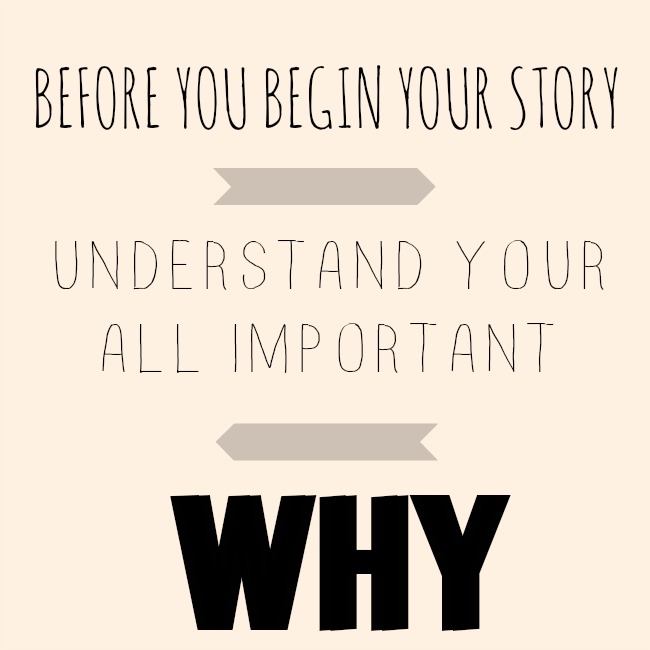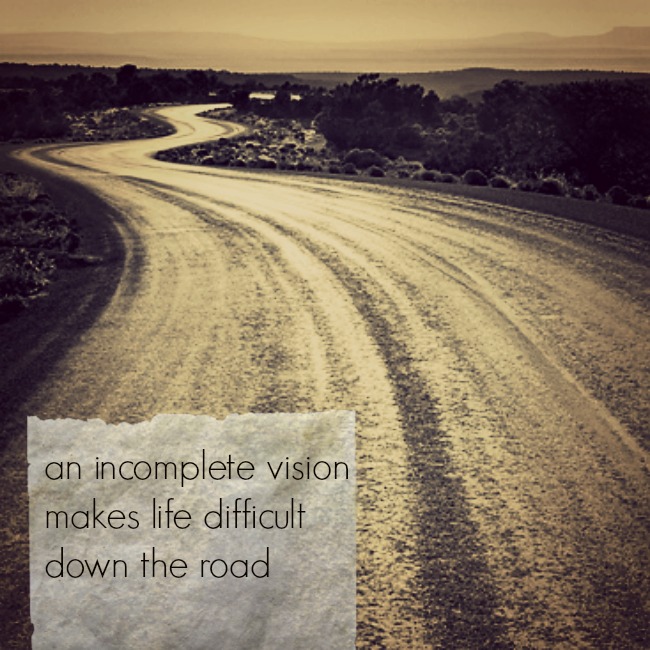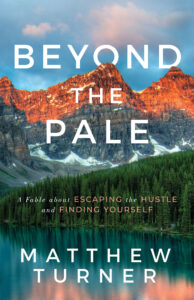So, you want to tell your story, do you? Good news indeed, because in a world full of imitations, your story is one of the true unique things you own. But how to tell a story? Is there a list or a template to follow? Not exactly, but as someone who embraces the world of storytelling, I have one or two tricks up my sleeve.
But, before you can tell your story, you must first start it.
Sometimes this is easy, but starting something new is often riddled with issue. However, no matter what the story is, I always approach the start in the same way. Whether it’s Fiction or Non-Fiction, Client Work or My Website, or Speaking, Filmmaking, or anything else, the art of the start remains the same.
The following works for me, and although I encourage you to twist and change these to suit your needs and style (the aim is to tell your story, after all. Not mine), I hope they help in your quest to begin.
TELL YOUR STORY LIKE ONLY YOU CAN
Now, I know what you’re thinking: I’m an author, so when I talk about storytelling, I refer to novels and writing books. WRONG! I may sound like a broken record, but one of my aim for this website is to talk about storytelling in the ‘bigger picture‘ sense.
So, whether you’re here because you’re a writer, business owner, or wish to tell your story and share it with the world in the hope one day Ridley Scott picks up the move option, you’ve come to the right place. The art of the start is what it is, and I approach it in a similar manner each time.
[grwebform url=”http://app.getresponse.com/view_webform.js?wid=5060502&u=B3aK” css=”on”/]
UNDERSTAND YOUR ALL IMPORTANT ‘WHY’
Before you begin to tell your story, you must first understand what it is, and, more important, WHY it’s special.
At the beginning of this post, I talked about storytelling in some larger than life manner, treating it as the only unique thing in your world. Overkill? Maybe. But one thing I do know is, everyone has a story, and sharing them is becoming easier and ever more popular. This means that unless you have a worthy story, and share it in a remarkable fashion, you have little chance to stand out from the crowd.
Now, if you’re anything like me, when you start this process your mind overflows with one idea after another.
I can say this… and do this… and this can happen… and then that… and what about this idea… and the next… and AHHHHH!
I love this crazy and hectic idea-storm, but it’s important to get my head around it before it’s too late. After all, ideas are fine, but unless they work well with each other, and help tell a larger story, they’re rather worthless. That’s why the first thing I look to do is create two or three KEY DIRECTIONS to work towards.
These are the all important WHY. Without these, everything else is pointless. As you develop your story, and come up with new ideas, they must play nicely with these key points. If they don’t, everything unravels into an inconsistent mess. The sooner you understand the reason WHY, the easier this whole process is.
For example, with my latest novel, I UNLOVE YOU, these are the important points I came up with:
- YOUNG PARENTHOOD – MY OWN FEARS, FEELINGS, & EXPERIENCES
- RELATIONSHIP DYNAMICS – THE CHANGE FROM YOUNG ADULT TO NEW ADULT LOVE
- CONFUSION & CHANGE – COMING TO TERMS WITH LIFE CHANGING CHANGE
No matter what twists and turns the novel takes, it must relate to these key directions in some shape or form. This is how you tell your story and keep it consistent. This is how you tell your story and keep it exciting and unique. This is how you tell your story without losing your mind.

CHARACTERS – SETTINGS – JOURNEY
Your story has lots of elements, but your characters, setting, and the journey you’re about to take people on… these are the all important puzzle pieces in your chest of storytelling awesomeness.
Before you begin to tell your story, it’s vital you understand these attributes and have a clear picture in your mind. An incomplete vision makes life difficult down the road, so I suggest you spend time developing these now, so you can rock on with abundance later. I always take a visual approach during this, trying to paint a clear image for each important character and location in my story.
When it comes to fiction, I use Scivener as my writing software of choice, which makes creating and organising character profiles easy-peasy. Jam packing as much info as possible within them, I grab pictures of people who look similar to who I have in my mind; create bullet-point-lists of their facial features, clothes, and mannerisms; talk about their past and personality; and write short stories based on their POV.
The same applies for key locations, once again using actual images, noting smells and sounds and objects, and anything else that helps paint a clear picture. The result? You’re left with detailed profiles consisting of ACTUAL images, plus a whole bunch of visual cues to help along the way.
And again, this doesn’t apply only to fiction, as I take the same approach with my clients and their Brand Storytelling. For example, I recently worked with an awesome brand and their story, and it became clear that the founder’s Mother would play a HUGE role.
Asking her questions about what her mother looked like, the music she listened to, the way she spoke, laughed, walked, made people feel… I pressed and kept pressing until I built a clear picture of who ‘Mom’ was. Every time I worked on this story, I looked at my notes and imagined ‘Mom’ in my mind.
This does take rather a lot of groundwork, but it makes life so much easier further down the road. Every story has a few KEY elements, and you need to understand these inside-and-out. It’s time to get visual, cool cat.

STRUCTURE THESE THOUGHTS IN A FRAMEWORK
This final tip is 100% subjective, and in order to tell your story, you need to uncover what works best for you.
When it comes to storytelling, I know some people who detail every step of the way beforehand, and stick to it throughout. Other folk I know, make it up as they go along – editing and filling in the blanks afterwards. Personally, I stand somewhere in the middle.
I can’t imagine beginning a story without a clear path ahead of me. All that freedom would drive me insane, and I dread to think what my crazed mind would come up with. Then again, to detail every step along the journey is stifling.
As such, I create a clear idea of how I wish to begin the story, a clear vision as to how it’ll end, and create a few key moments in the middle. For example, with my latest non-fiction book, THE SUCCESSFUL MISTAKE, I’ve already interviewed 100+ people, therefore understand the key topics, chapters, and sections I need to cover.
I know how I want to start, and where it needs to finish, and I have a rough idea what each section of the middle covers. BUT, plenty of question marks remain, so as I delve into each interview, write each section, and draft one chapter after another, I have room to change course and deviate – which in my experience, always happens.
I don’t complicate this process, neither, and I urge you to keep things simple as you tell your story, too. Creating a separate document and a bunch of bullet points, my notes look something like like this:
_____________________
- CHAPTER 1 = MAIN CHARACTER WAKES UP ON THE BEACH WITH NO MEMORY
- CHAPTER 2 = WALKS AROUND THE STRANGE TOWN, TRYING TO REMEMBER
- CHAPTER 3 = MEETS SOMEONE WHO KNOWS HIM – BUT HE DOESN’T KNOW HER
- ?????
- ?????
- ?????
- ?????
- CHAPTER 8 = SHE ISN’T ALL THAT SHE SEEMS TO BE
- CHAPTER 9 = MAIN CHARACTER UNCOVERS HER TRUTH – AND MUST DECIDE WHAT TO DO NEXT
- ?????
- ?????
- ?????
- ?????
- CHAPTER 14 = HE FINALLY UNCOVERS THE TRUTH, AND REGAINS HIS MEMORY
- CHAPTER 15 = THE END – HE’S REUNITED WITH HIS FAMILY
_____________________
The above covers a short story I’ve just made up (don’t worry, I’m not writing it haha), a story I think will have around 15 chapters. I know how I want to start, and where it needs to end, and I also have a few twists and turns for the middle. Everything else remains a mystery I’l uncover as I write and develop the story.
AND DON”T WORRY, things change! It’s okay to deviate from your structure and move chapters around. But in order to tell your story, you need to find a structure that works for you – keeping you on track, but with the freedom to create.

IT’S TIME TO TELL YOUR STORY, BABY
Before you begin to tell your story, you must first start it, and in order to achieve this, you must master the art of the start.
These are the three things I do before I begin ANY story. Whereas some projects require a brief overview, others need an in-depth look into the above. The key is to understand your story inside out before you begin to tell it. In my experience, this makes life much easier 🙂
And that’s all there is to it. Thanks for reading, and please shoot me a message on either FACEBOOK or TWITTER, sharing how you tell your story. I hope this post has helped somewhat, and I can’t wait to continue our conversation.
TUNRDOG
[grwebform url=”http://app.getresponse.com/view_webform.js?wid=2632502&u=B3aK” css=”on”/]

